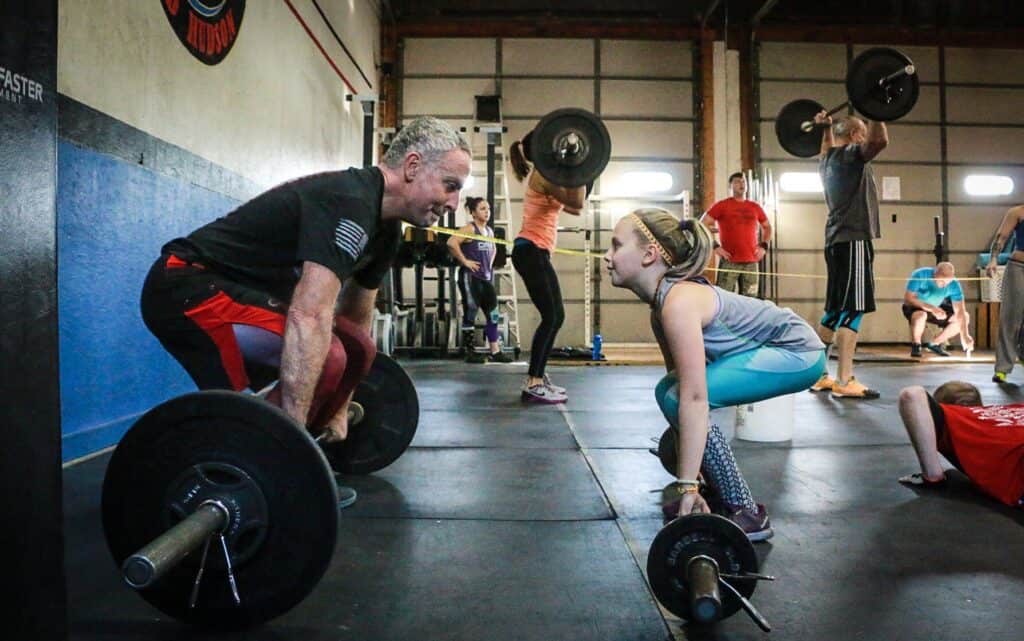Conditioning Introduction
Hey there, fitness enthusiasts and weekend warriors! Ever wonder why some athletes seem to have an endless tank of energy, while others gas out too soon? Or why some people can push through the last grueling minutes of a game, while others seem to lose their mojo? The secret sauce is often something we overlook: conditioning.
Conditioning isn’t just about how many miles you can run or how much weight you can lift; it’s the cornerstone of athletic performance. Whether you’re a seasoned athlete, a gym-goer, or someone just getting started on your fitness journey, this article is for you. We’ll delve into what conditioning really means, why it’s a game-changer for your performance, and how you can avoid common pitfalls. So, buckle up and let’s get started!

Athletic Performance and the Everyday Athlete
So, what exactly is conditioning? In a nutshell, it’s the process of training your body to be more efficient, stronger, and more agile. Think of it as the operating system that powers your athletic apps—without it, even the best skills can falter.
Types of Conditioning
- Cardiovascular Conditioning: This is all about your heart and lungs. It’s what lets you run longer, swim farther, and keep going when the game is on the line.
- Strength Conditioning: This focuses on muscle endurance and power. It’s not just about lifting heavy weights; it’s about functional strength that improves your performance in specific sports or activities.
- Flexibility Conditioning: Ever seen a gymnast bend like a pretzel? That’s flexibility conditioning. It helps with range of motion and can prevent injuries.
- Skill Conditioning: This is sport-specific and involves honing the skills required for your particular athletic endeavor.
The Science Behind Conditioning
Conditioning isn’t just a buzzword; it’s backed by science. When you condition your body, you’re essentially training your muscular and cardiovascular systems to work more efficiently. This can lead to improved oxygen uptake, better nutrient utilization, and quicker recovery times which leads to overall better athletic performance no matter what your sport is.
Why Conditioning Matters
You might be thinking, “I’ve got skills, so why do I need conditioning?” Well, let’s break it down. Skill might get you in the game, but conditioning keeps you in it. Here’s why:
The Impact on Performance
- Stamina: Conditioning improves your endurance, allowing you to maintain a high level of performance for longer periods. Imagine being able to sustain your energy level in the fourth quarter just like you did in the first. Game-changer, right?
- Speed and Agility: Proper conditioning can make you faster and more agile. This is crucial in sports where quick movements are the name of the game, like basketball or soccer.
- Injury Prevention: A well-conditioned body is less prone to injuries. Think of it as your body’s own insurance policy against strains, sprains, and other mishaps.
Real-World Examples
- Michael Phelps: This swimming legend didn’t just rely on his technique; his rigorous conditioning routine made him an Olympic champion.
- Serena Williams: Her incredible strength and endurance are the results of a conditioning regimen as fierce as her backhand.
- Tom Brady: At an age where most athletes are considering retirement, Brady’s focus on conditioning has kept him at the top of his game.
Conditioning is the unsung hero of athletic performance. It’s the foundation that allows your skills to shine and gives you the edge when it matters most.
Common Conditioning Mistakes
Alright, so we’ve established that conditioning is your secret weapon for athletic performance. But beware—there are some common pitfalls that can throw a wrench in your performance game.
Lack of Rest and Recovery
Your body needs time to repair and rebuild. Skipping rest days or neglecting proper recovery techniques like stretching and hydration can set you back in your conditioning goals. Remember, Rome wasn't built in a day, and neither is a well-conditioned body.
Overtraining
Yes, there's such a thing as too much of a good thing. Overtraining can lead to fatigue, decreased performance, and even injury. It's like revving your car's engine non-stop; eventually, something's going to give.
Ignoring Nutrition
You wouldn't put low-grade fuel in a high-performance car, would you? Nutrition is the fuel for your body, and ignoring it can seriously hamper your conditioning efforts. Make sure you're getting the right balance of carbs, proteins, and fats to optimize your training.
Avoiding these common mistakes can make a world of difference in your athletic performance. It’s not just about working hard; it’s about working smart.
Conditioning for the Everyday Athlete
So, you’re not aiming for the Olympics, but you still want to up your game in the local league or just feel more fit in your daily life. Good news: conditioning isn’t just for the pros.
Tips for Incorporating Conditioning
- Start Small: You don’t have to go all out from day one. Begin with manageable goals like a 20-minute jog or a few sets of weightlifting, and gradually increase the intensity.
- Mix It Up: Variety is the spice of life, and it’s also key for effective conditioning. Combine cardio, strength, and flexibility exercises to create a well-rounded routine.
- Consistency is King: Rome wasn’t built in a day, and neither is a well-conditioned body. Consistency over time yields the best results.
Benefits for Non-Professional Athletes
- Improved Health: Better cardiovascular health, stronger muscles, and improved mental well-being are just a few of the perks.
- Enhanced Daily Function: From lifting groceries to chasing after your dog, conditioning makes everyday activities easier.
- Increased Longevity: A well-conditioned body is more resilient and can contribute to a longer, healthier life.
Whether you’re shooting hoops in the local league or just want to keep up with your kids, conditioning offers benefits that extend beyond the playing field. It’s not just about being good; it’s about being good for a long time.
The Mind-Body Connection in Athletic Performance
We’ve talked a lot about the physical aspects of conditioning, but let’s not forget the mental game. Your mind is like the coach, and your body is the athlete; they need to work in harmony for you to perform at your best.
Psychological Aspects of Conditioning
- Mental Toughness: Conditioning isn’t just physical; it’s also mental. The ability to push through fatigue and discomfort often comes from a strong mindset.
- Focus and Concentration: A well-conditioned body allows your mind to focus on the task at hand, whether it’s sinking a three-pointer or finishing that last mile.
- Stress Management: Exercise is a natural stress reliever, and a conditioned body handles stress more effectively. Think of it as your built-in chill pill.
How Mental Strength Complements Physical Conditioning
- Resilience: Mental toughness can help you bounce back from setbacks, be it a bad game or an injury.
- Decision Making: A conditioned body is less fatigued, allowing for clearer thinking and better decisions during crucial moments in a game or workout.
- Confidence: Knowing you’ve put in the work to condition your body can give you a mental edge over your competition.
The mind and body are a dynamic duo in the world of athletic performance. Conditioning your body is like tuning a musical instrument; it allows the artist—in this case, your mind—to perform at its best.
Customizing Your Conditioning Plan
So you’re sold on the idea of conditioning, but where do you start? The answer is as unique as you are. Here’s why a one-size-fits-all approach won’t cut it.
Importance of Individualized Plans
- Personal Goals: Whether you’re aiming to run a marathon or just want to keep up with your kids, your conditioning plan should align with your personal goals.
- Physical Limitations: Got a bad knee or a chronic condition? An individualized plan can be tailored to work around these issues.
- Lifestyle Factors: Work schedule, family commitments, and other lifestyle factors should be considered when crafting your conditioning plan.
Consulting Professionals for a Tailored Approach
- Health Assessments: A thorough health check-up can provide valuable insights into what your conditioning plan should include.
- Expert Guidance: Coaches and fitness experts can help design a plan that’s just right for you. They can also provide ongoing support and adjustments as you progress.
- Accountability: Sometimes, knowing someone is tracking your progress can be the extra push you need to stick with your plan.
Remember, conditioning is not a sprint; it’s a marathon. And just like a marathon, it requires a well-thought-out strategy. Consulting professionals can help you create a plan that’s as unique as your fingerprint, setting you up for long-term success.
Conclusion
So there you have it, folks! Conditioning is the unsung hero that can make or break your athletic performance. It’s not just about how fast you can run or how high you can jump; it’s about creating a well-rounded, resilient body that can take on any challenge. From the pros to the everyday athlete, conditioning is the key to unlocking your full potential.
Ready to level up your game?
Additional Resources
For those of you who want to dive deeper, here are some recommended reads and courses:
- “Elite Physique: The New Science of Building a Better Body” by Chad Waterbury
- “Yoga for Athletes: 10-Minute Yoga Workouts to Make You Better at Your Sport” by Dean Pohlman
- “The Everyday Athlete Cookbook” for nutrition tips

